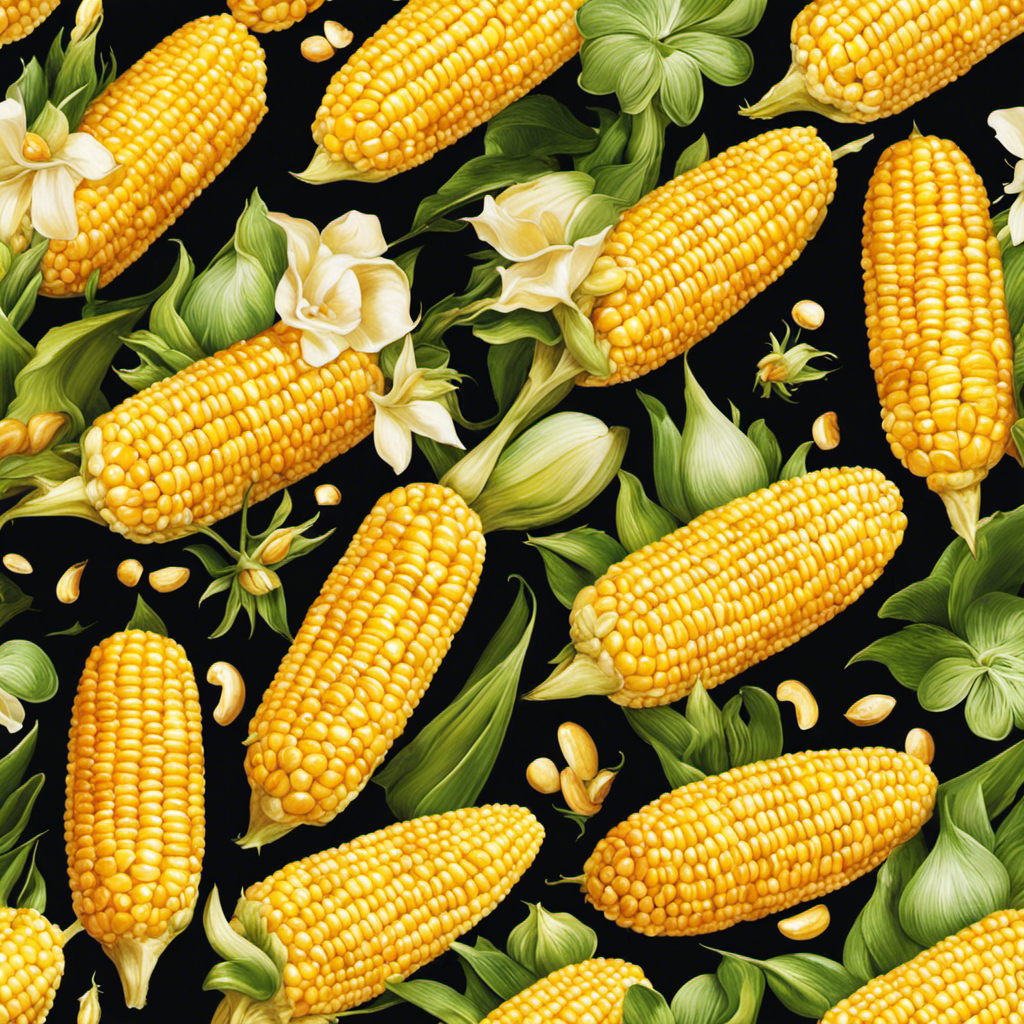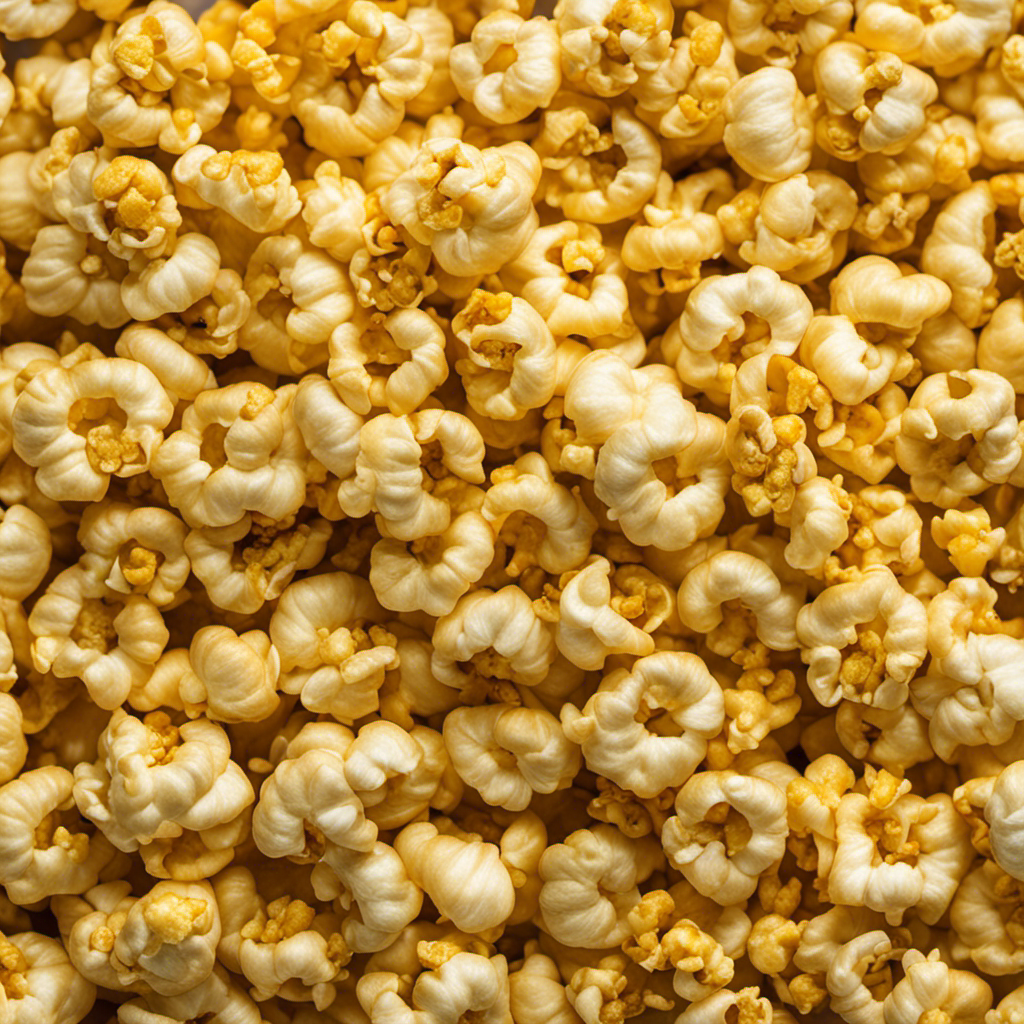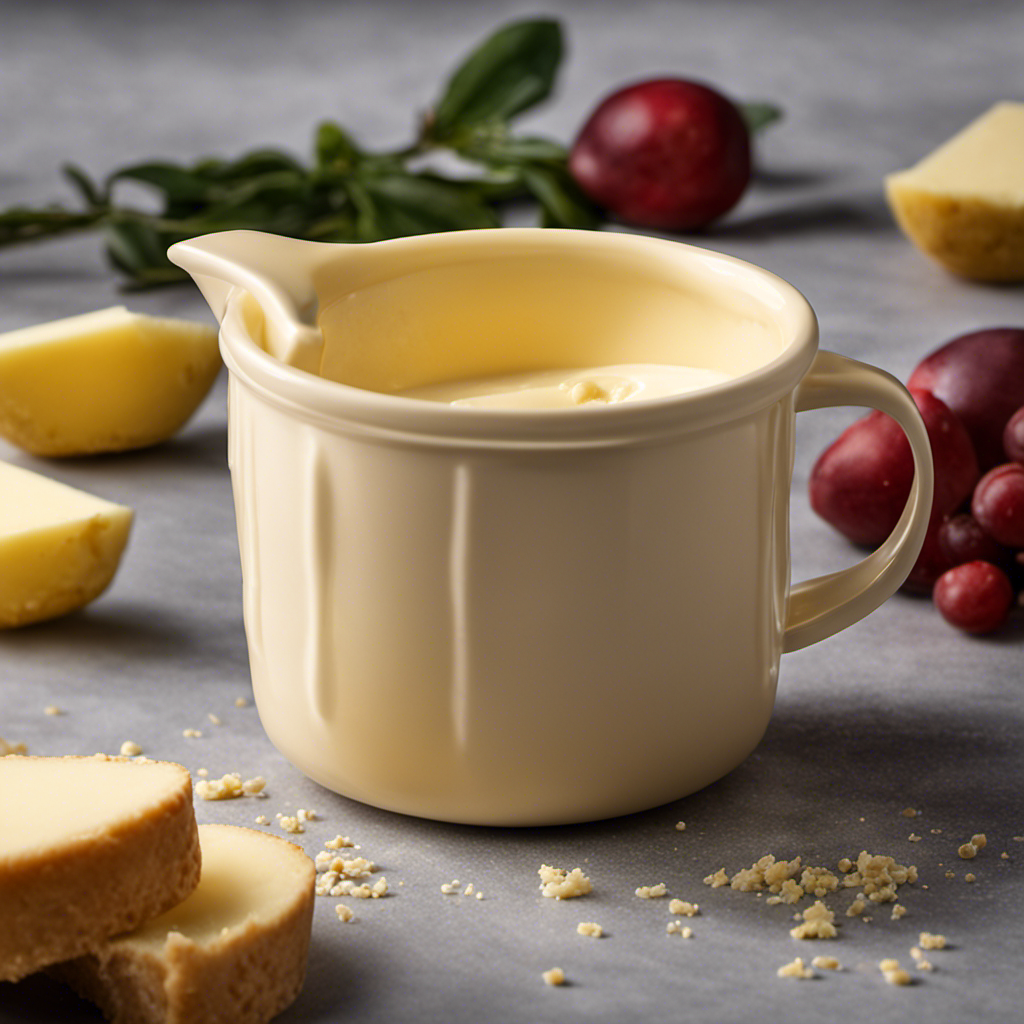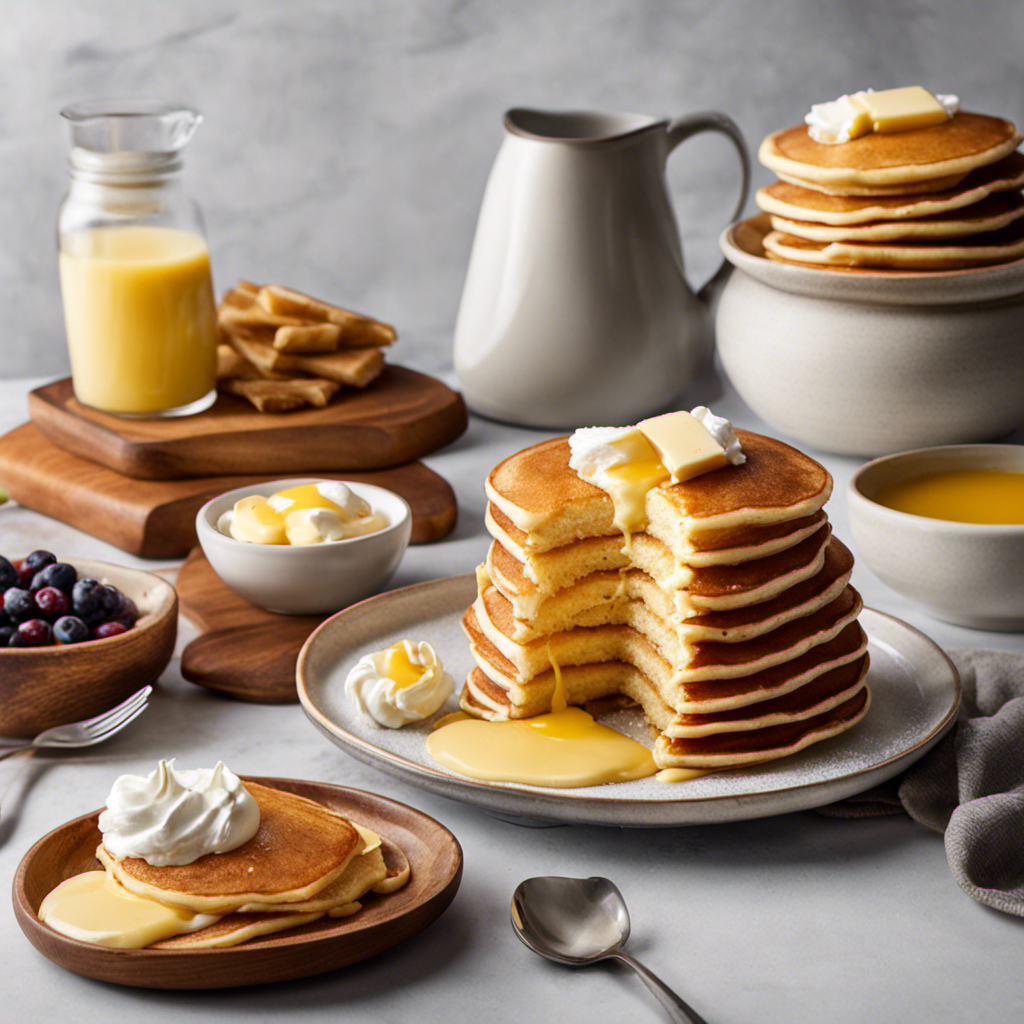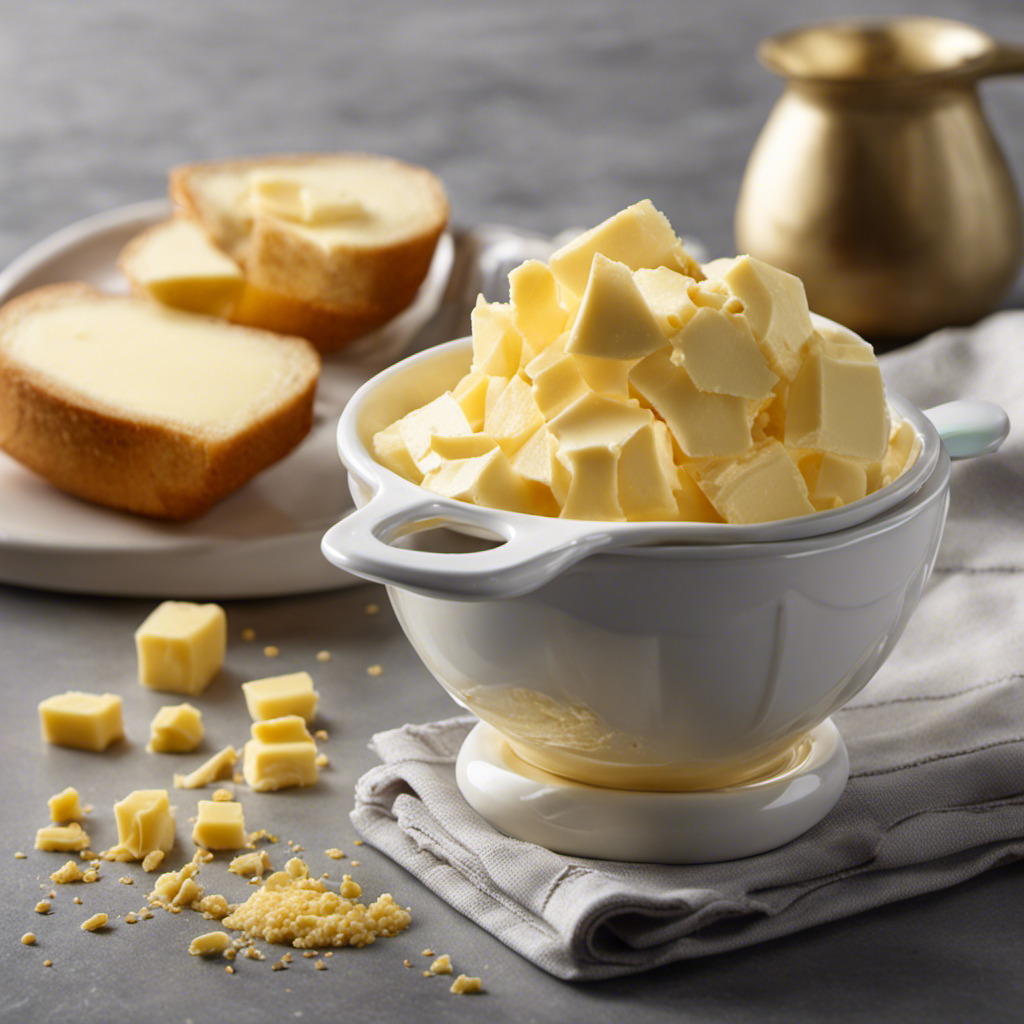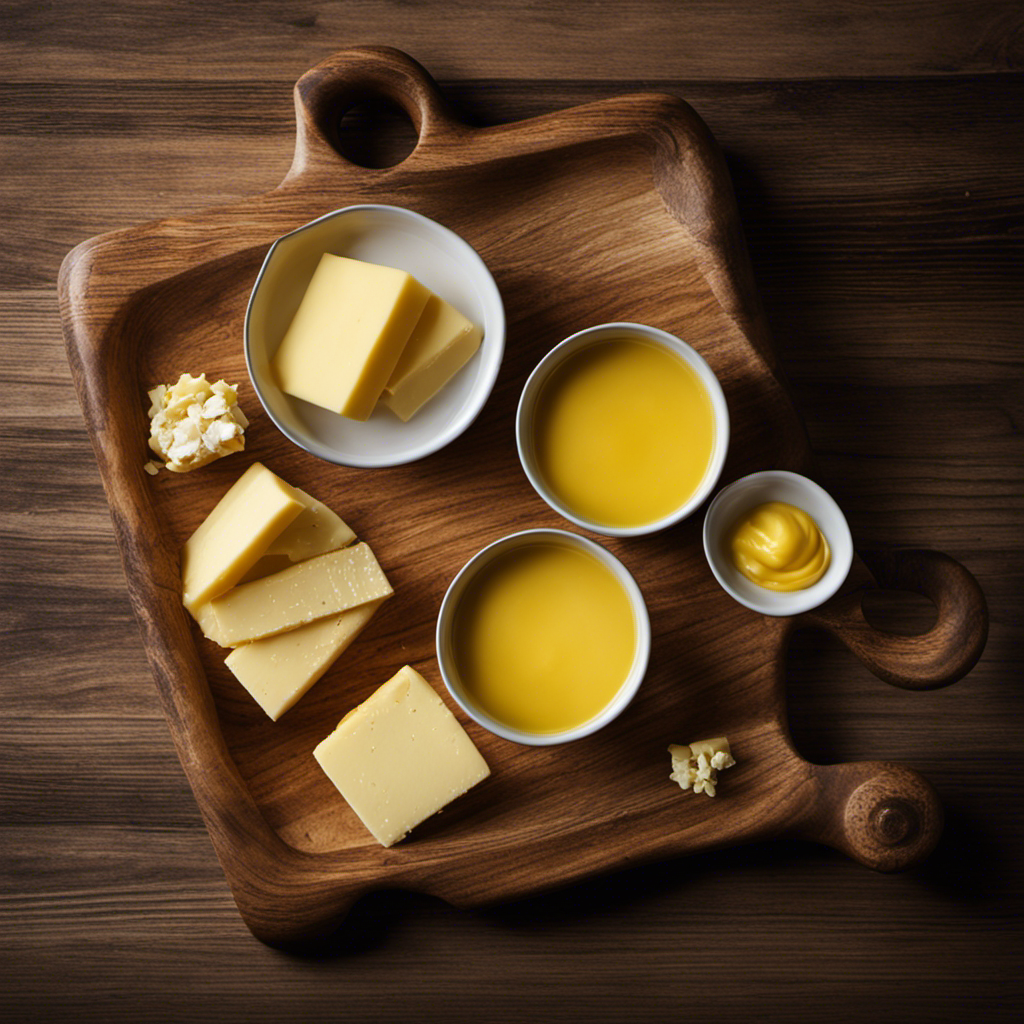Hello, everyone! Have you ever thought about the number of calories contained in that tasty ear of corn smothered in butter? Fear not, because I have all the delicious information you need.
In this article, we’ll dive into the nutritional profile of corn with butter, break down its calorie content, and explore how different corn varieties stack up.
So, get ready to satisfy your curiosity and make informed choices about enjoying this delightful summer treat. Let’s get started!
Key Takeaways
- Corn is a nutritious food, containing fiber, vitamins, and minerals.
- Butter adds a significant amount of calories to corn, with one tablespoon containing approximately 102 calories.
- The caloric content of an ear of corn with butter is around 225 calories.
- It is important to consume corn with butter in moderation and consider healthier alternatives such as using a small amount of olive oil or seasoning with herbs and spices.
Nutritional Profile of Corn With Butter
You’re probably wondering about the nutritional profile of corn with butter. When it comes to corn nutrition, corn itself is a good source of fiber, vitamins, and minerals. It is low in fat and calories, making it a healthy addition to your diet.
However, when you add butter to corn, the caloric content increases significantly. Butter is high in calories, with approximately 102 calories per tablespoon. Therefore, it’s important to be mindful of the amount of butter you add to your corn, as it can quickly add up and contribute to weight gain if consumed in excess.
Now that we’ve discussed the nutritional profile of corn with butter, let’s delve into the caloric content in more detail.
Caloric Content of Corn With Butter
There’s a significant amount of caloric content in an ear of corn when butter is added. Corn itself is a nutritious vegetable, rich in fiber, vitamins, and minerals. However, when butter is added, it increases the total caloric content.
One medium-sized ear of corn, which is approximately 90 grams, contains about 123 calories. Adding a tablespoon of butter, which is approximately 14 grams, adds an additional 102 calories. Therefore, the total caloric content of an ear of corn with butter is around 225 calories.
It is important to note that while corn with butter may provide some nutritional benefits, such as essential fats and flavor, it should be consumed in moderation as part of a balanced diet. Different cooking methods, such as grilling or steaming, can also impact the overall caloric content of corn.
Breakdown of Calories in Corn With Butter
When butter is added to an ear of corn, it significantly increases the caloric content. Corn is a nutritious vegetable that is low in calories and packed with essential nutrients.
However, when you add butter to your corn recipes, it adds extra calories and fat. One tablespoon of butter contains approximately 102 calories and 11 grams of fat. If you generously slather your ear of corn with butter, you could easily add an additional 200 calories or more.
It’s important to be mindful of your portion sizes and consider the added calories when enjoying corn with butter. If you’re looking to reduce your calorie intake, you can opt for healthier alternatives such as using a small amount of olive oil or seasoning your corn with herbs and spices instead.
Butter’s Impact on Corn’s Calorie Count
Adding butter to corn significantly increases its caloric content. While corn itself is a nutritious vegetable, butter adds extra calories due to its high fat content. A tablespoon of butter contains around 102 calories, and when melted and drizzled over a serving of corn, it can add an additional 100 calories or more. Despite the increase in calories, some people prefer to enjoy corn with butter due to the enhanced taste it provides.
However, it’s important to note that the nutritional benefits of corn can still be enjoyed without adding butter. Corn is a good source of dietary fiber, vitamins, and minerals. It is low in fat and cholesterol, and also contains antioxidants that help protect the body against certain diseases. So, if you’re watching your caloric intake or prefer a healthier option, enjoying corn without butter is a great choice.
Nonetheless, taste preference plays a crucial role in determining how you enjoy your corn.
Comparing Calorie Content of Corn Varieties With Butter
Even though some corn varieties have more calories than others, adding butter to any type of corn will increase its caloric content. When comparing the nutritional benefits and taste preferences of different corn varieties with butter, there are several factors to consider:
-
Sweet corn: This variety is higher in natural sugars, giving it a sweeter taste. When butter is added, it enhances the sweetness, making it a popular choice for those with a sweet tooth.
-
Field corn: This variety is typically used for animal feed or processed into cornmeal. While it has fewer calories than sweet corn, adding butter can still enhance its flavor and make it more enjoyable to eat.
-
Popcorn: This variety is known for its ability to pop and its low calorie count. Adding butter to popcorn can turn it into a delicious snack, but be mindful of portion sizes to keep the calorie content in check.
Considering these factors, it is important to be aware of how different corn varieties and the addition of butter can affect the calorie count.
Factors Affecting Calories in Corn With Butter
The type of corn you choose, along with the use of butter, will impact its overall calorie content.
Factors affecting the taste of corn include the variety of corn, its ripeness, and how it is cooked.
Different corn varieties have different levels of sweetness and tenderness, which can affect the overall taste. Additionally, the ripeness of the corn can also impact its taste. Corn that is picked at its peak ripeness tends to be sweeter and more flavorful.
Cooking methods can also influence the taste of corn. Boiling corn in water can help retain its natural sweetness, while grilling corn can add a smoky flavor.
Ultimately, the combination of corn variety, ripeness, and cooking method can greatly affect the overall taste of corn with butter.
Health Considerations of Consuming Corn With Butter
As someone who’s concerned about my health and nutrition, I believe it’s important to understand the nutritional value of the foods I consume.
When it comes to corn, it’s a good source of carbohydrates, fiber, and various vitamins and minerals.
However, it’s also crucial to consider the impact of butter on our health. Butter is high in saturated fats and can contribute to health issues such as heart disease.
Nutritional Value of Corn
Have you ever wondered about the nutritional value of corn? Well, let me tell you, corn is not only delicious but also packed with essential nutrients.
Here are some nutritional benefits of corn:
-
Fiber: Corn is a good source of dietary fiber, which aids in digestion and helps maintain a healthy weight.
-
Vitamins and Minerals: Corn is rich in vitamins A, B, and E, as well as minerals like potassium and magnesium. These nutrients play a crucial role in supporting overall health and immunity.
-
Antioxidants: Corn contains antioxidants like lutein and zeaxanthin, which are beneficial for eye health and may help reduce the risk of age-related macular degeneration.
When it comes to cooking methods, boiling or grilling corn is the best way to preserve its nutritional value. Steaming is also a healthy option. Avoid adding excessive butter or oil, as it can increase the calorie content.
Butter’s Impact on Health
In my research, I found that butter can have both positive and negative impacts on health. On one hand, butter is a source of saturated fats, which have been linked to an increase in LDL cholesterol levels. LDL cholesterol is often referred to as the "bad" cholesterol because high levels can increase the risk of heart disease. However, it’s important to note that recent studies have challenged the long-held belief that saturated fats are solely responsible for heart disease. Additionally, butter contains butyric acid, which has been shown to have anti-inflammatory properties. As for weight gain, butter is calorie-dense, with 102 calories per tablespoon. Consuming excess calories, regardless of their source, can lead to weight gain over time. Moderation is key when it comes to including butter in a balanced diet.
| Pros of Butter | Cons of Butter |
|---|---|
| Contains butyric acid with anti-inflammatory properties | High in saturated fats, which can increase LDL cholesterol levels |
| Adds flavor to dishes | Calorie-dense and can contribute to weight gain |
| Contains fat-soluble vitamins like A, D, E, and K | May increase the risk of heart disease if consumed in excess |
Frequently Asked Questions
Is Corn With Butter a Healthy Snack Option?
Corn with butter can be a tasty snack, but it’s important to consider its nutritional value. While it does provide some vitamins and minerals, it can also be high in calories. Cooking corn can alter its nutritional content.
What Are the Different Ways to Prepare Corn With Butter?
There are many delicious ways to prepare corn with butter. Grilling, boiling, and roasting are some different cooking methods. You can also make flavored butter by adding herbs or spices for extra taste.
Can I Add Other Seasonings or Toppings to Corn With Butter?
Yes, you can use margarine instead of butter on corn. Some popular seasonings that pair well with corn are salt, pepper, garlic powder, chili powder, and paprika.
How Does the Calorie Content of Corn With Butter Compare to Other Vegetables?
When comparing the calorie content of corn with butter to other vegetables, it’s important to consider the nutritional value as well. The calorie count may vary, but it’s essential to focus on overall health benefits.
Are There Any Alternative Toppings or Spreads That Can Be Used Instead of Butter on Corn?
There are several alternative spreads for corn that can be used instead of butter, such as olive oil, avocado, or Greek yogurt. These options provide health benefits like healthy fats, vitamins, and minerals.
Conclusion
After analyzing the nutritional profile and calorie content of corn with butter, it is evident that this delicious combination can be a calorie-rich indulgence.
The butter’s creamy richness enhances the natural sweetness of the corn, creating a mouthwatering experience.
However, it is important to note that consuming corn with butter should be done in moderation, as the calorie count can quickly add up.
This indulgence can be enjoyed as a treat, but it is crucial to maintain a balanced diet and consider the health implications of consuming high-calorie foods regularly.
